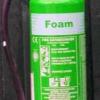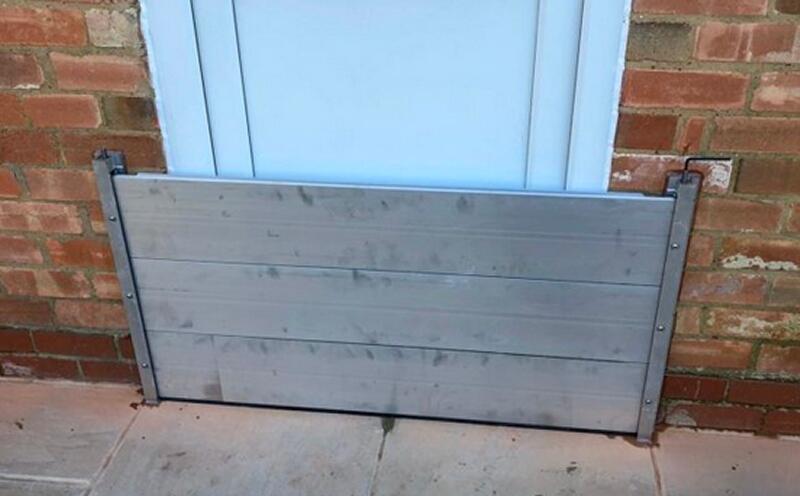-
Posts
674 -
Joined
-
Last visited
Posts posted by green-foam
-
-
Jackie O has posted again, with drawing. To see the post in full click HERE
-
Life comes first, so if there is a fire, get out and call the fire brigade. Or buy the correct fire extinguisher now, learn how to use and hope you never have to use it.
-
This is a fire safety forum, there are so many makes/models of access controllers, I can only suggest you contact Dormakaba. Their email address is info.gb@dormakaba.com
-
Make, model and age of your smoke alarm would help.
-
45 minutes ago, Guest Michael Llewellyn said:
Could such doors also be effective in keeping out flood water
Doubtful, since fire doors only have smoke seals and often a brush at the base.
Flood prevention devices have rubber seals on 3 sides, and once installed they are rigid and can not move, a fire door by design, moves.
The picture below shows a flood prevention barrier that can be put into place in minutes prior to a flood warning.
-
I suggest that your "engineer" is in error and there is nothing wrong with your fridge or freezer.
Fridges and freezers work by removing heat from inside what is essentially an insulated box. They do this by using a sealed system of small pipes and a compressor (Which is outside of the box, at the back) This sealed system does not contain carbon monoxide, also if there was a leak in the pipes your fridge or freezer would no longer get cold.
Check the date on your carbon monoxide alarm as most will only last for 5 years, some 7 years. Also check the age of its battery, some have to be changed annually, but quite a lot have a "battery for life"
You probably had a false alarm, in which case reset/clear your detector. If it continues to sound alarm condition, open all the windows and wait for it to stop.
Another thing you can do is take the detector outside wait for it to stop, bring the detector back in, if it works when you press the test button all is well, if it starts again open all the windows and call the gas company.
-
I have seen cases where the ceiling has been painted AFTER the installation of a smoke alarm, and the smoke alarm is now "sealed" to its base by a coat of paint. If this is the case then carefully run a utility knife between the base and the detector.
It is also a good idea to change the battery once a year, a good time to do this is when the clocks change.
A video of how to change a battery can be seen if you click here
-
You will need a receipt/proof of purchase to obtain a "Master code" (That may or may not work, depending on model) If you do not have this, you will have to call a locksmith.
-
On 29/10/2021 at 19:23, Jamie H said:
I was under the impression that they had to be locks that didn’t need a key to unlock from the inside or at I thinking about something else?
I believe you are thinking of a fire exit.
-
All upholstered furniture must comply with the fire regulations, including garden furniture, since it can also be brought inside and used .
-
Guest Protect UK has made a duplicate post which you can see/reply to if you Click here
-
Fire hoods are only a requirement if there is a sleeping area above the lights.
An example is: A kitchen with a bedroom above.
But that said, if a downlight is Fire rated it does not require a "fire hood"
Fire hoods/fire rated downlights are only designed to stop the spread of fire from the level below to the level above.
Insulation covering downlights only serves to keep heat in the light, so causing it to get too hot and to fail prematurely.
Low smoke cable can often be found in large open space public buildings, it is not a requirement elsewhere.
Cables should be neatly clipped as and when required* but this fact is often ignored due to time allowed for the job.
* Depending on size of cable, cable run length, what it is fixed to, vertical or horizontal
-
If the batteries are less than 1 year old, and the alarm has not sounded since, but does sound when the test button is pressed, and the alarm has not expired (Some CO alarms have a 5 year life, others a 7 year life) then you have had a false alarm.
-
A red LED flashing twice in 40 seconds means that That detector has gone into alarm.
For the sake of argument you have 4 Aico detectors interlinked. You are in the garden and you hear the alarm, but it stops as you get back in, you then look at all your detectors, which ever one is flashing twice in 40 seconds, is the one that went into alarm.
If it has not cleared press and hold the test button for at least 10 seconds
-
If they have no fire label as you know you can not sell them, but there is nothing to stop you giving them away.
For future reference: Furniture made before the1950's does not require any label. (But that would mean it is 70+ years old)
-
On 14/09/2021 at 14:02, Guest Yvonne said:
We have only a small amount of mains power which is just sufficient to run the security alarm on,
Are you sure? To operate any electric doors, a crane, conveyor belt etc does require a lot of energy several Amps so yes a generator may be required in your case. (It may even need 3 phase) but an average emergency light only uses 11milliAmps
11mA is around 2.6 watts, the lamp in my fridge is 5 watts (Yes, almost twice as much) I would be very surprised if the supply you have can not run a few emergency lights.
You may be able to use torches, but I would have to ask, if there was a powercut, how would anyone find a torch?* There is such a thing as a "plug in torch" that you plug into a normal socket, when there is a powercut the torch comes on, but you would need to have conveniently placed sockets installed.
"plug in torches" for commercial use cost close to £50 each, 3 hour duration emergency lights cost less than 1/2 of that.
*It has been shown that if personnel carried a torch all the time "just in case" after a short while the torches would get lost, flat batteries or just forgotten about.
-
If the batteries are corroded, and "something wet" came out of your CO alarm, and its display is blank, I would replace it A.S.A.P.
-
I would ask is the mains present at the detectors?
-
The idea is that a smoke alarm is NOT mounted in a "dead area" If the loft hatch takes up most of the available room then you have no choice. Also you should read what the instructions say.
-
Smoke alarms very rarely false alarm, as yours has done so twice in less than 12 hours and it was only installed just under 3 months ago I would get in touch with fire angel, It should be covered under the fire angel 5 year warranty.
-
Your question sounds simple, but it has too many variables, even if you were given a guess you still have to get at least 2 quotes for the work.
You should start with a Fire Risk Assessment.
-
I suggest you ask the local authority, you don't want to have it fitted for them to say it is not acceptable.
-
You could have taken the smoke detector down and cleaned it with a vacuum cleaner (Clears out any dust etc)
If you are going to change it, as it is interlinked get another one of the same brand, if you don't none of them may work at all.
Carbon monoxide does not smell.
-
It is a piezzo sounder, it is not a fire alarm related question. I can only suggest you buy a different alarm, one that has "chime"




Smoke Alarm sounded for 15 sec for no reason
in Smoke Alarms
Posted
If it has now stopped bleeping, and still works when you press the test button, you have had a false alarm.